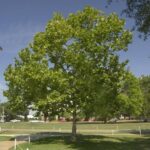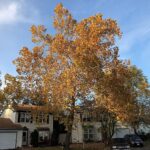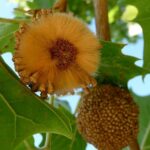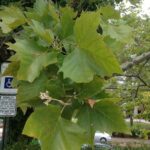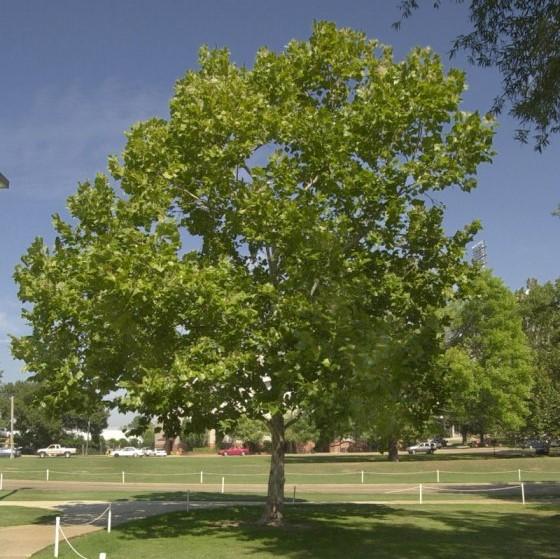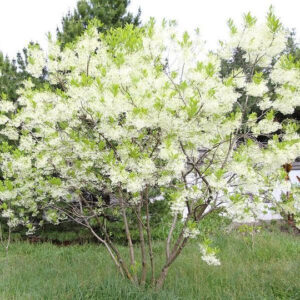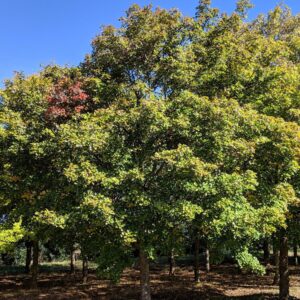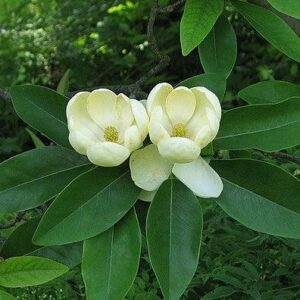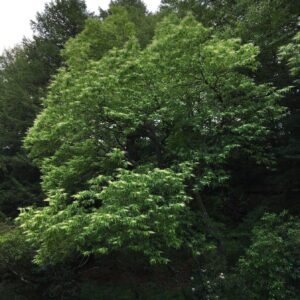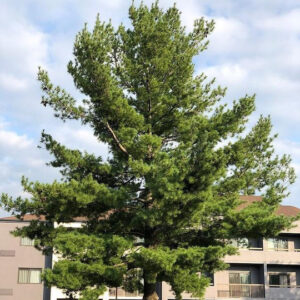The American Sycamore, scientifically known as Platanus occidentalis, is a large and majestic deciduous tree native to North America. Here’s everything you need to know about it:
-
Appearance: American Sycamores are known for their impressive size, reaching heights of up to 100 feet (30 meters) or more. They have a broad, spreading canopy with branches that often grow horizontally. The bark is distinctive, with patches of white, gray, and brown that peel off in irregular patterns, revealing the lighter inner bark.
-
Leaves: The leaves of the American Sycamore are large, palm-shaped, and have three to five lobes. They are bright green in spring and summer, turning yellow or brown in the fall before dropping.
-
Flowers: In the spring, American Sycamores produce small, inconspicuous flowers that are arranged in round, hanging clusters called “inflorescences.” These flowers are not particularly showy but provide a valuable source of nectar for bees and other pollinators.
|
Type: |
Tree |
|
Origins: |
East N. America; GA Native |
|
Height: |
75′ – 100′ |
|
Spread: |
75 – ‘ 100’ |
|
Spacing: |
80’ |
|
USDA Hardiness Zone: |
4 – 9 |
|
Culture: |
Full Sun |
|
Bloom Color: |
Yellow(male), Red(female) |
|
Season of Interest: |
Fall, Year-Round |
MAINTENANCE NEEDS: High Maintenance. Sycamore anthracnose is a significant disease that severally damages twigs and leaves. Leaf spot, canker, and powdery mildew may occur. Pests include Japanese beetles, borers, scale, and mites. As a lawn tree may require significant clean-up from twigs, leaves, and fruits.
LANDSCAPE USES: Specimen or mass plantings, Naturalized Areas, Shade Tree, and Screening.
COMPANION PLANTS: Hosta, Coral Bells, Hydrangea
IMAGES: Famartin, 2019-11-13 16 17 24 An American Sycamore in late autumn along Tranquility Court in the Franklin Farm section of Oak Hill, Fairfax County, Virginia, CC BY-SA 4.0, (2) MOHAMMED HAMZA, A8-2-Platanus occidentalis (Eastern Sycamore), CC BY-SA 3.0, (3) Jeff Turner from Santa Clarita, CA, United States, American sycamore (Platanus occidentalis) 2, CC BY 2.0, (4) Richard Stephen Haynes, Sycamore Tree Bark, CC BY-SA 4.0
*As plants have ranges in appearance they may not appear as the images shown

